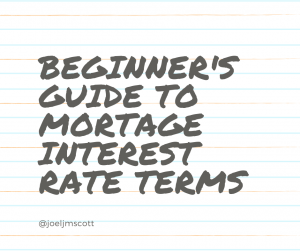
When you start shopping for a mortgage (stop, we can do that for you) you’ll come across a lot of financial lingo about interest rates. You’ll likely come across several different types of rate terminology and knowing this terminology is important in understanding how you make decisions for your mortgage.
There are a few different rate types you’ll read/hear about. Here’s a quick cheat sheet for reference.
Posted Rate
Posted rates are the rates advertised by the big banks and financial institutions. They are often slightly higher than actual rates that they will lend to you, and what you may not know is that you are expected to negotiate down. Also notable to mention is that the posted rate is the rate that banks use to calculate their penalties when breaking a mortgage. Meaning, they can use this inflated rate to calculate your penalty and charge you more.
Benchmark Rate
The Bank of Canada qualifying rate (Benchmark Rate) is different from the actual mortgage rates offered by banks. When you’re applying for a mortgage, a lender will ensure you can withstand rate increases and afford future mortgage payments by using the higher of either the Bank of Canada qualifying rate (5.19% at time of writing) or +2% the contracted rate (the rate you agree to in your mortgage contract).
Contract Rate
This is the official rate that you agree to in your mortgage commitment. It’s the interest rate at which your monthly (biweekly whatever) payments are based on for the term of your mortgage. It should be noted this for FIXED rate mortgages. If you’ve chosen a variable rate mortgage, your interest rate will fluctuate with your lender’s prime lending rate and adhere to specifics in your mortgage contract.
Qualifying Rate
Like the Benchmark Rate, The Qualifying Rate is what lenders use to ensure you can afford the payments of your mortgage, as well as withstand any possible increase in payments if rates change (If you’re in a fixed rate mortgage, your rate stays the same for the term of the mortgage). Your qualifying rate is either the Benchmark Rate (currently set at 5.19% by the Bank of Canada) or 2% points higher than the rate you’ve agreed to in your mortgage contract. This helps protect both you and the lender, ensuring that you can afford your payments moving forward.
Prime Rate
This is the interest rate set by the Bank of Canada. It dictates how much it will cost financial institutions to borrow money. Your bank and other lenders will base their own “Prime Lending Rates” on this rate. Banks and instutions will set their own prime rates based on the Bank of Canada prime rate. So, when you hear a bank or lender offer a lending product at “1 over prime” or “prime plus 1%”, they mean 1% over the prime rate being offered by them.
Overnight Rate
The Bank of Canada sets its overnight rate which dictates how expensive it will be for the major financial institutions in Canada to borrow money. Then those major financial institutions set their own prime rates based on the overnight rate (as a side note, each of the 5 big banks in Canada set their own prime rate but, often, it’s the same). Simply put, the higher the Bank of Canada sets the overnight rate, the higher a bank’s prime rate will be and the higher the interest rate you’ll be offered when you go to borrow money. (Source: Loans Canada)
Summary
If you’re looking to secure a mortgage or any type of loan, use this reference to help understand the rates you are looking at. Be sure you know the difference when it comes to interest rates, it could save you thousands of dollars!
Yours in Success
Joel
905-376-1625